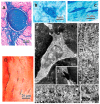Pineal Calcification, Melatonin Production, Aging, Associated Health Consequences and Rejuvenation of the Pineal Gland
- PMID: 29385085
- PMCID: PMC6017004
- DOI: 10.3390/molecules23020301
Pineal Calcification, Melatonin Production, Aging, Associated Health Consequences and Rejuvenation of the Pineal Gland
Abstract
The pineal gland is a unique organ that synthesizes melatonin as the signaling molecule of natural photoperiodic environment and as a potent neuronal protective antioxidant. An intact and functional pineal gland is necessary for preserving optimal human health. Unfortunately, this gland has the highest calcification rate among all organs and tissues of the human body. Pineal calcification jeopardizes melatonin's synthetic capacity and is associated with a variety of neuronal diseases. In the current review, we summarized the potential mechanisms of how this process may occur under pathological conditions or during aging. We hypothesized that pineal calcification is an active process and resembles in some respects of bone formation. The mesenchymal stem cells and melatonin participate in this process. Finally, we suggest that preservation of pineal health can be achieved by retarding its premature calcification or even rejuvenating the calcified gland.
Keywords: aging; calcification; melatonin; neurodegenerative diseases; pineal gland; rejuvenation.
Conflict of interest statement
The authors declare no conflict of interest.
Figures





References
-
- Golan J., Torres K., Staśkiewicz G.J., Opielak G., Maciejewski R. Morphometric parameters of the human pineal gland in relation to age, body weight and height. Folia Morphol. 2002;61:111–113. - PubMed
Publication types
MeSH terms
Substances
LinkOut - more resources
Full Text Sources
Other Literature Sources
Medical

